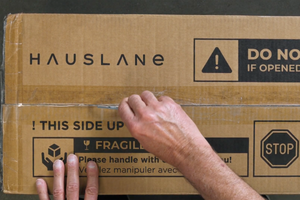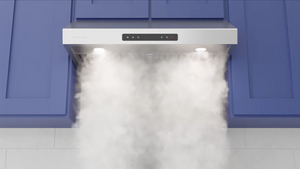How to Keep Your Home Safe from Gas Leaks
Over 40 million homes in the United States have a natural gas stove. Gas stoves are popular for their ability to control heat better and are cheaper to run than electric stoves in some states. However, they also pose the risk of a gas leak, an extremely dangerous occurrence that can lead to illness or death from carbon monoxide poisoning or fire from gas fumes. Improperly installed or maintained generators, furnaces, and attached garages pose a similar risk. If you have a natural gas stove, there are steps you can take to protect your house and loved ones safe from a gas leak.


Signs of a Gas Leak
It’s important to be aware of the tell-tale signs of a gas leak. Some are more obvious than others so take careful note.
- A rotten or sulfur smell. If you notice a foul smell or an odor reminiscent of hard-boiled eggs (e.g., sulfur), there's the potential for a gas leak. Natural gas is actually odorless and colorless, but companies add mercaptan to give gas a distinctive, sulfur-like odor. Note: It's common to notice a light sulfur-esque smell when first turning on your burner. You can use your range hood to whisk this smell away.
- A whistling or hiss-like sound. Does it sound like someone is whistling? Do you hear a low hiss-like sound? This could indicate a gas leak.
- White mist or fog. A ruptured gas line can lead to a white mist or fog-like presence around your property.
- Orange or red flames on your stovetop. When you turn on your burner on your stovetop, you should notice blue flames. If you see orange or red flames, there is gas present in the air that is taking away oxygen.
- Check for bubbles. Combine one cup of water with a teaspoon of dish soap. Apply the mixture to wherever you suspect a gas leak. If bubbles form, gas may be escaping and would indicate a leak.
- Dead plants. Noticing lots of brown houseplants even though you're keeping up your watering routine? Yep, even our green friends are not immune to the effects of carbon monoxide.
- Physical symptoms. The symptoms of carbon monoxide poisoning are quite serious and include breathing problems, chest pains, dizziness, lightheadedness, headaches, eye and throat irritation. nausea, ear ringing, irritability, mood changes, loss of consciousness, nose bleeds, and even death.
- Use a gas leak detector. The best way to test for a gas leak (besides calling a professional) is to use a natural leak detector. You can often find dual natural gas and carbon monoxide detectors to install in your home; which function similar to a smoke alarm, for a greater peace of mind.

What to do if You Suspect a Gas Leak
If you notice any of the above signs, immediately turn off your pilot light or gas meter and evacuate your property. Contact your gas company and the local authorities. Do not re-enter the property until authorities have officially determined that no gas leak is present or the gas leak has been fully addressed.\
To prevent gas leaks, ensure that gas appliances are regularly inspected and maintained. You should also make sure that these appliances are properly installed and review any related gas safety documents.
Looking for more tips on keeping your air clean? Check out our recent guide to maintaining healthy, fresh kitchen air.








